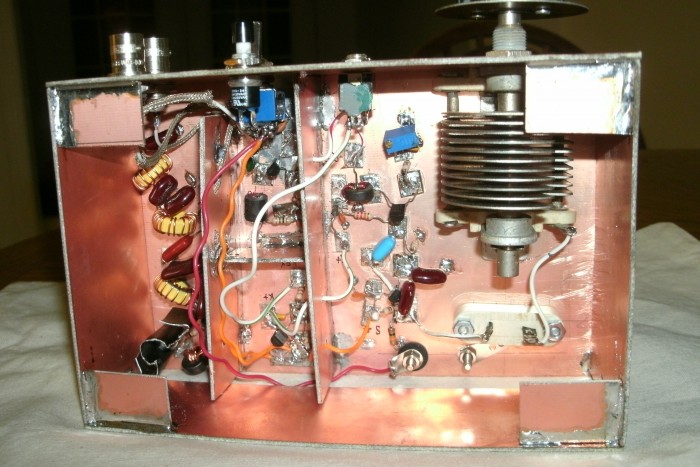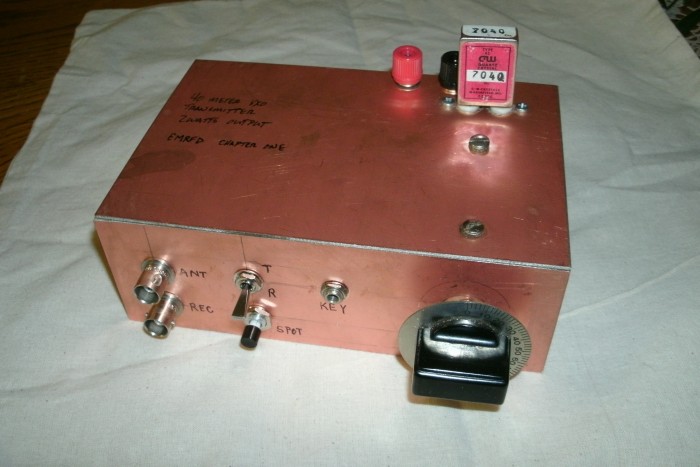[Today’s run: Watson Road]
Last winter I dove in and built the “First Transmitter” from Chapter 1 of Experimental Methods in RF Design (EMRFD). It is a crystal controlled 40-meter CW transmitter using 5 transistors and producing about 2 watts of output.
One difference I made: for my final output low-pass filter I did not use the design in EMRFD but instead employed a different design which appeared in QEX magazine during the time I was abuilding.
I had built it on a single board, manhattan style, and it mostly worked. I made some contacts with it, using my Drake R-4B on the receive side. It produced the right power output and the waveform was clean when operating into a 50 ohm dummy load. But the waveform was fuzzy when operating into my antenna tuner and G5RV antenna.
Fooling around with it, I decided that some of the problem was probably due to having the whole thing in a horseshoe shape on my PC board. The output was right near the oscillator and even closer to the keying circuit. In some cases it would key up but refuse to drop… makes it hard to do CW when the thing only does eeeeeeeeeeeeeeee the first time you do key-down.

So I decided to rebuild it and I did so over Christmas weekend. I used almost all of the same parts. I added an air-variable capacitor in hopes that I might be able to bend my crystals a bit and move the frequency around (a hope yet unrealized). If nothing else, I now have it in a box-shaped thing and have some pretty good shielding between the RF-quiet and RF-loud sections.
I’ve made a couple of contacts with it and I enjoy using it. I’ve been using my homebrew straight key with it. So I have homebrew TX, key and antenna tuner. I’m feeling more like a real ham all the time.
But the waveform into my tuner is still kind of hairy. So maybe I should have gone with the low-pass filter that was in the book. Maybe some day I’ll check that out but I think for now I’ll be happy and just use it for awhile.
